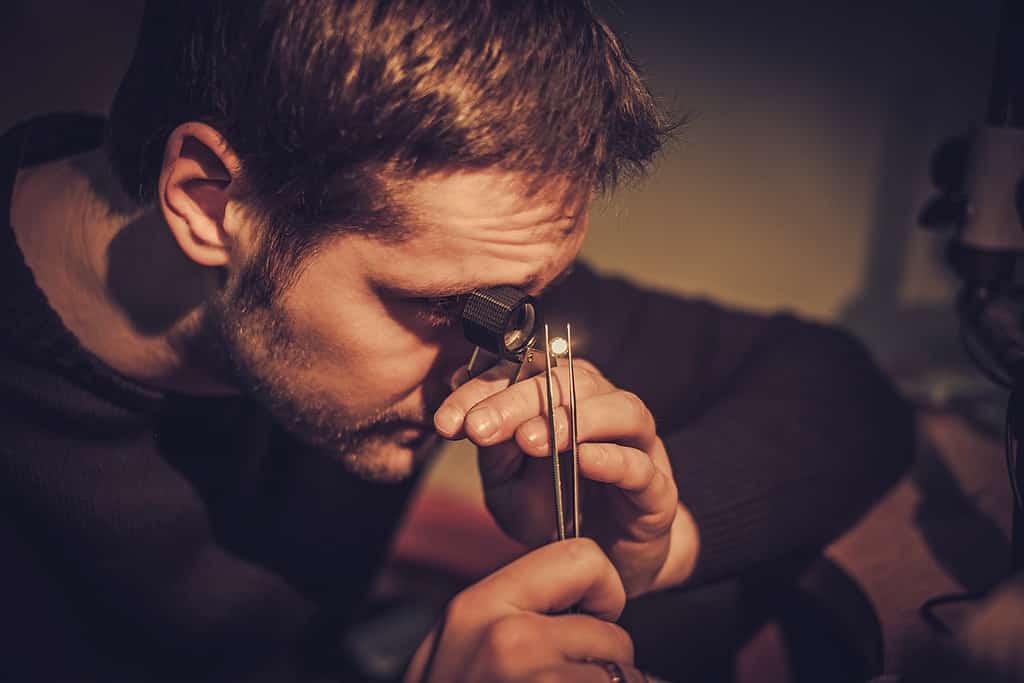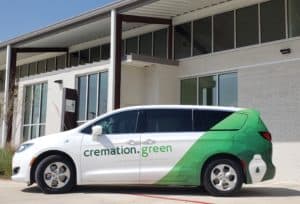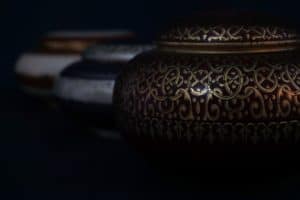Cremation diamonds have become a popular way to memorialize a loved one who has been cremated. They’re so popular Kris Jenner wants her cremains to be made into necklaces for her children.
The process of creating cremation diamonds is really amazing, and results in a gemstone that is indiscernible from a natural diamond. However, it’s important to know how everything works because it’s an investment. Cremation diamonds typically cost between $$1,000 and $20,000 depending on a number of factors. This guide helps explain how cremation diamonds are made and what affects the price.
How Cremation Diamonds Are Created
Lab-grown diamonds are diamonds that are created in a laboratory under the same conditions that form diamonds in nature. But to create a cremation diamond extra steps have to be taken to properly incorporate the cremains. Below is a rundown of how cremation diamonds are created.
Get the Cremains to the Lab
Before the process can begin the laboratory needs to receive the cremains that will be used. Cremains can be used to create a lab-grown diamond because they contain carbon. Typically, you’ll have to provide at least a couple ounces of the cremains, but it could be closer to four ounces. You should have more than enough given that the family usually receives 4-8 pounds of cremains.
The laboratory should provide clear directions on how to prepare and package the cremains. Special labeling may be required to ship the cremains in the mail.
Processing Carbon From the Cremains
The first thing the laboratory will do is isolate the carbon in the cremains. Human cremains contain anywhere between 1-4% carbon. The carbon is isolated from the cremains by placing the cremains in a heated chamber that’s 5,000 degrees Fahrenheit for a few weeks. Slowly the carbon turns into powder graphite. From there the powder graphite is refined so that it becomes a graphite structure that can be used as the basis for the diamond.
The graphite structure must then be mixed with general carbon before it goes into a pressurized chamber known as an HPHT (high pressure high temperature) machine. The pressure inside the chamber is 850,000 pounds per square inch. It’s the same extreme force that allows for diamonds to grow deep in the earth. The chamber is also heated to 2,500 degrees Fahrenheit.
Diamond Development
This is the stage when the actual crystals of the diamond begin to take shape. A raw diamond will form from the crystals. What’s important here is that cremation diamonds are grown separately in their own chamber, not with other diamonds. The time it takes for the diamond to fully form is mostly dependent on how large you want it to be.
Cleaning, Polishing, Cutting
Once the raw diamond is done growing the process isn’t complete unless you requested a raw cremation diamond that is untouched. The final steps are to clean, polish and cut the raw diamond. This will be done based on your preferences.
Who Makes Cremation Diamonds
Not everyone who sells natural diamonds also offers lab-grown diamonds, and even then that doesn’t mean they make cremation diamonds. You’ll have to find a laboratory that specializes in cremation diamonds that have to go through the initial carbon processing.
There are a few companies that are at the forefront of the technology. LifeGem was the first to offer cremation diamonds in 2001, and since then the options have greatly expanded. A few companies worth considering are Saint Diamonds, Heart in Diamond and Algordanza.
Factors That Affect Cremation Diamond Pricing
Cremation diamonds aren’t cheaper and they aren’t any less expensive than a real diamond from nature. They can actually be more expensive than other lab-grown diamonds because of the extra steps that are needed to process the cremains and grow the diamond separately in an HPHT machine.
Beyond that, all the same factors that affect prices for natural diamonds apply to cremation diamonds that are grown in a lab. The major expense factors include:
Carat Size
The larger the diamond is, the more it will cost. Carat size is probably the biggest factor in determining the price. Generally, the size starts at 1/10 carat.
Clarity
After carat size, clarity affects the price of a cremation diamond the most. Clarity refers to how many imperfections (inclusions) are in the diamond. The range for clarity goes from flawless (FL) to Included3.
Color
Diamonds can be clear or any color of the rainbow. However, when you are evaluating color it’s in reference to clear diamonds. The diamond color scale ranges from D (colorless) to J (detectable color). The closer a diamond is to being colorless, the more expensive it will be. Creating a diamond that’s a specific color could actually be an additional cost since extra steps must be taken.
Cut
Like color, some cuts are more expensive because they either require a bigger diamond or are more complicated.
Getting a Certificate of Authenticity
One thing that you’ll want to make sure of is that the cremation diamond comes with a certificate of authenticity. Just as with other natural diamonds and legitimate lab-grown diamonds, you should receive a certificate so that you know you are receiving your cremation diamond.
The certificate of authenticity is an official document that will specify important details including:
- Carat
- Cut
- Color
- Clarity
- Dimensions (length, width)
One thing of note is that the certificate of authenticity will measure cut quality. That means it’s not just an indication of the cut but also how well it was done.
Before agreeing to purchase a cremation diamond ask who will provide the certificate of authenticity. The certificate should come from a reputable third-party lab such as the Gemological Institute of America (GIA) or American Gem Society (AGS).
RELATED READING: 10 Ideas for What to do With Cremains
The team at Green Cremation Texas can help you get eco-friendly direct cremation arranged so that you can use the cremains to create special keepsakes. You can reach us 24 hours a day by phone, text or email.






